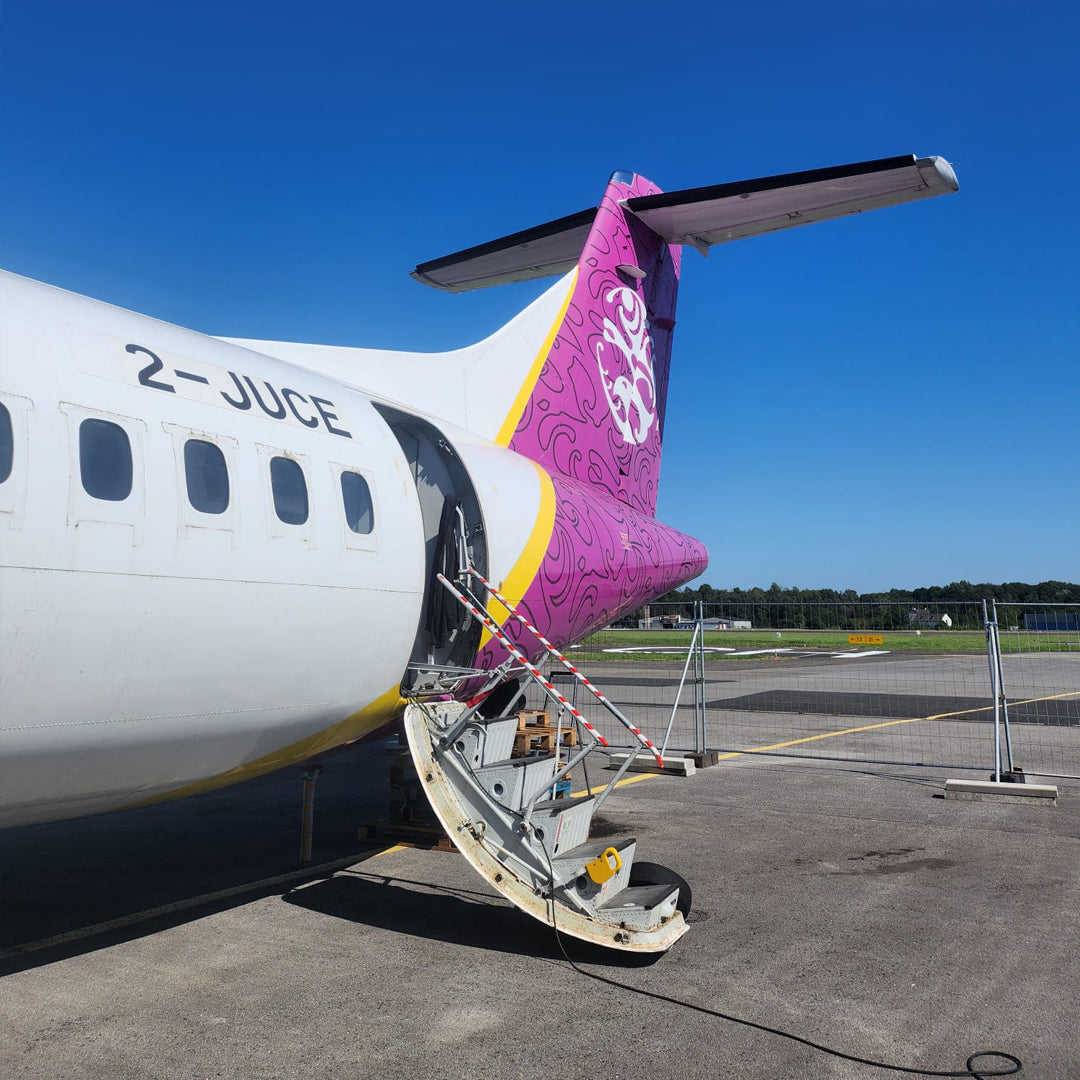The Journey of the CS-TGV and the Legacy of the Airbus A310
This blog post delves into the fascinating journey of the CS TGV, exploring its transition from a pioneering aircraft to a cherished collector's item through our latest Aviationtag edition. We’ll also take a closer look at the Airbus A310's broader history and the role of Azores Airlines, the airline that operated the CS-TGV in its final years. Together, these stories weave a rich tapestry of aviation heritage, celebrating an iconic aircraft and its legacy through our specially crafted Aviationtags. Join us as we uncover the history behind these remarkable elements of aviation history.

The Airbus A310-300 with the registration CS-TGV is more than just an aircraft; it's a symbol of the end of an era in European aviation. Originally delivered in 1992 to Air Afrique as TU-TAD, this aircraft began its journey connecting distant corners of the world.
In 2000, it was acquired by SATA International—now known as Azores Airlines—and renamed "S. Miguel" after the beautiful Azorean island. For years, it played a crucial role in bridging the Azores with mainland Portugal and beyond.
The CS-TGV wasn’t just another plane in the fleet; it was the last Airbus A310 to serve in scheduled European service. Its final flight on October 15, 2018, when it made a memorable low pass over Ponta Delgada Airport, marked the conclusion of its operational life and the end of an era.
But the story doesn’t stop there. In 2023, we discovered the aircraft in the Mojave Desert, salvaged its finest parts, and transformed them into our latest Aviationtag edition—allowing enthusiasts to own a piece of this unique aircraft’s history.

Aviationtag Airbus A310 CS-TGV Collection
The Airbus A310: A Chapter in Aviation History
The Airbus A310 was a significant milestone in aviation. As a shortened, more versatile version of the Airbus A300, the A310 was developed to meet the needs of airlines seeking a smaller wide-body aircraft for medium- to long haul routes. The first A310 was delivered in April 1983 to Swissair, marking the beginning of a production run that would see 255 aircraft built.
The A310-300 variant, like the CS-TGV, was equipped with additional fuel tanks, providing it with the extended range necessary for transatlantic flights. This flexibility made it popular among airlines in Europe and beyond. Over its production run, the A310 found its way into the fleets of many prominent airlines, serving both regional routes and long-haul journeys with equal efficiency.

Production of the A310 ended in 1998, with the last deliveries made in the early 2000s. As airlines sought more fuel efficient and technologically advanced aircraft, the A310 was phased out in favor of newer models like the Airbus A330 and the Boeing 767. These newer aircraft offered better performance, lower operating costs, and greater passenger comfort, making them the preferred choice for airlines looking to modernize their fleets.
Despite the end of its production, the Airbus A310 remains an important chapter in aviation history, remembered for its versatility and reliability. The CS-TGV, as the last A310 in European commercial service, stands as a testament to the enduring legacy of this remarkable aircraft.
Azores Airlines: A Lifeline for the Azores
Founded in 1990 as SATA International, Azores Airlines has long served as a critical connection between the remote Azores archipelago and the rest of the world. The airline's history is deeply intertwined with the development of the Azores as a travel destination. Originally a part of the SATA Group, which was established in 1941, the airline began as a regional carrier linking the islands. Over time, it expanded its operations to include international routes, becoming a lifeline for the Azores.
The CS-TGV, under the name "S. Miguel," was not just another aircraft in its fleet—it was a symbol of the airline's mission to connect the Azorean islands with mainland Portugal and beyond. When Azores Airlines acquired the CS-TGV in 2000, the aircraft became a key part of its operations. For nearly two decades, it transported countless passengers to and from the Azores, helping to boost tourism and maintain essential links for the island’s residents. The aircraft's final flight in 2018 was a poignant moment for the airline, marking both an end and a beginning as the company moved forward with a modernized fleet.
Today, Azores Airlines operates a modern fleet of Airbus aircraft, including the A320neo and A321neo, focusing on routes between the Azores, mainland Portugal, and select destinations in North America and Europe.
Despite the modernization, the legacy of the CS-TGV and its role in the airline's history is immortalized through the Aviationtag edition. This unique collector's item allows aviation enthusiasts and collectors alike to own a piece of history—a tribute to the last Airbus A310 to serve in European commercial aviation and a nod to the enduring spirit of Azores Airlines.

We hope you enjoyed this journey through the history of the Airbus A310, the legacy of Azores Airlines, and the unique story of the CS-TGV.
We’d love to hear your thoughts! What are your favorite memories or experiences with the Airbus A310?










Hi all I love aviation tag although I haven’t got any but this blog post tells me a little bit of history
Air Afrique…Mojave desert… Azores and most of all the aircraft itself…What a thrilling and fascinating story in for every aviation fan!!!
Great aircraft! Glad I have got the set in my collection.
Cool preservation of aviation heritage.
Je voulai un tag A310 depuis longtemps ! Mon kit reçus est parfait ! L'histoire de cette oiseau est fascinante, malheureusement difficile de voler avec de nos jours.
C'est un retour en arrière, 26 ans de bon et loyaux service !
Il vivra à travers nos collections.
Merci